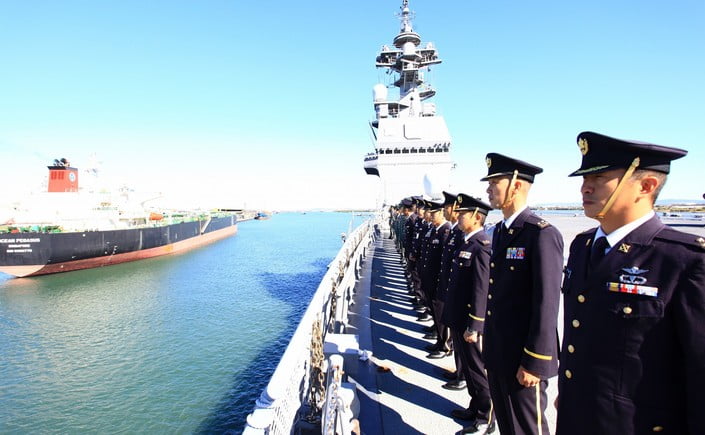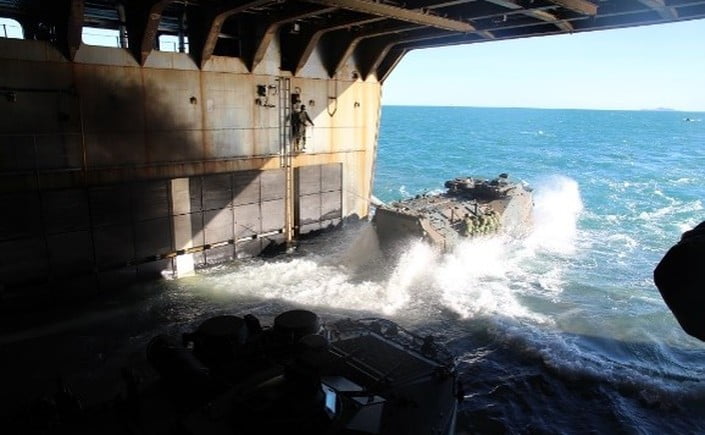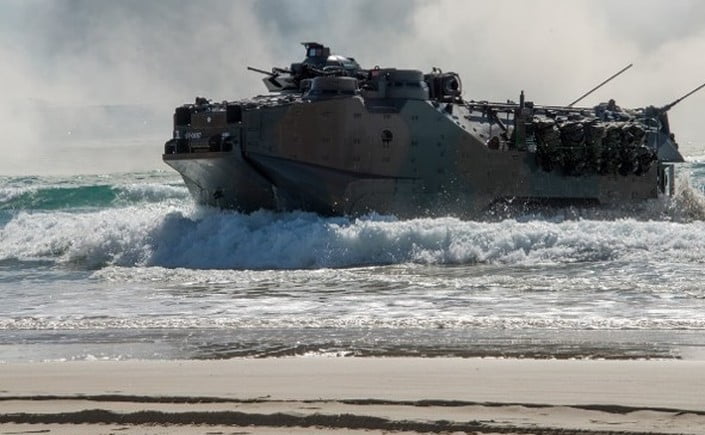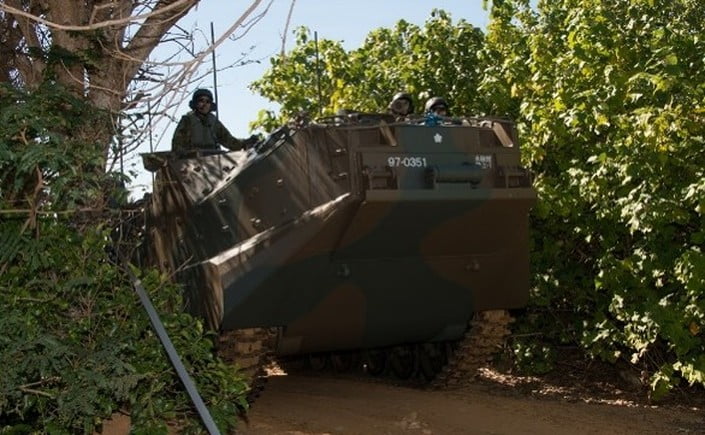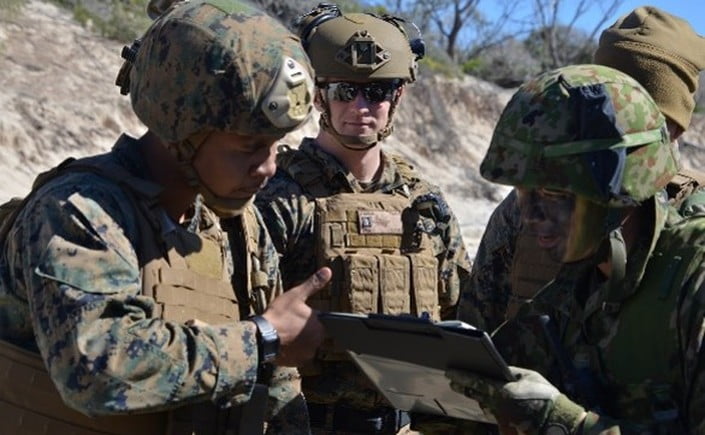We argued in our 2103 book on Pacific strategy, that Japan would work to enhance its perimeter defense and move eventually towards what we called a two anchor appraoch.
We argued that expanded perimeter defense is a key part of what we referred to as the “dynamic defense” phase in Japanese policy. We argued that “this meant greater reach of Japanese systems., better integration of those systems within the Japanese forces themselves, more investments in C2 and ISR, and a long-term strategy of reworking the U.S.-Japanese military relationship to have much greater reach and presence.
“The dynamic defense phase carries with it the seeds for the next phase — the shaping of a twin-anchor policy of having reach in the Arctic and the Indian Ocean.
“Obviously, such reach is beyond the capabilities of the Japanese themselves and requires close integration with the United States and other allies. And such reach requires much greater C2, ISR and weapons integration across the Japanese and allied force structure.”
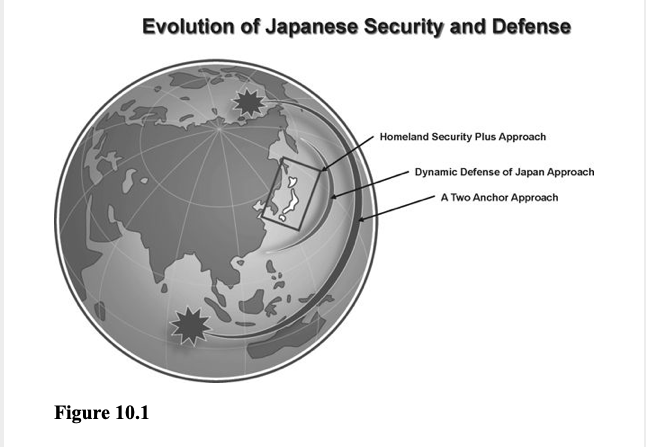
One of the key features of our appraoch was and continues to be how to leverage the new systems we are already bringing on line which allows us to expand our deterrence in depth capabilities.
There is way too much emphasis Inside the Beltway on potential and hypethetical future systems and significant denigration of how the newly being introduced systems when much more effectively integrated with robust C2 rather than some hegemonic Amazon cloud like system can deliver the capabilities we need in the evolving five year period in front of our forces.
It too often seems that the approach is shaping dense briefings of the world in 2030 as a deterrent to our adversaries rather than building out the capabilities which are within reach as new systems enter the force.
If we were to write this book now we would expand significantly the Australian role in what is becoming a Japanese-Australian-United States creative process in reshaping full spectrum crisis management forces.
A good example of how the future is being shaped now has been the work done in Tailsman Sabre 2019..
The Japanese fully participated in the exercise and brought some of their perimeter defense capabilities to the exercise effort.
According to the Japanese Ministry of Defence:
From June 3rd to August 21st, the Japan Ground Self-Defense Force (JGSDF) and the Japan Maritime Self-Defense Force (JMSDF) are participating in the Talisman Sabre 2019 with the U.S. Navy and Marine Corps in Australia. It is the first time the JMSDF participates in this exercise.
This exercise aims to improve the tactical capabilities of the JGSDF and JMSDF in amphibious operation and land battle as well as interoperability between Japan and the U.S., and to contribute to maintaining peace and stability in the Indo-Pacific region.
Approx. 330 personnel from the JGSDF’s Amphibious Rapid Deployment Brigade and 1st Helicopter Brigade as well as approx. 500 JMSDF personnel from the JS Ise and JS Kunisaki are participating in the exercise.
And in an article by Seth Robson published by Stars and Stripes on July 24, 2019, the Japanese engagement in the exercise was highlighted:
Members of the Japan Ground Self-Defense Force began observing and participating in amphibious training with U.S. Marines on Okinawa in 2012.
The training, which was off limits to media, was part of a multiyear effort to develop amphibious capability that included new helicopter carriers and landing craft.
The buildup has taken place amid tensions in the East China Sea, where China has challenged Japan’s claim to the Senkaku Islands (known as Daioyu by the Chinese) and the nearby oil and gas resources.
Japan Maritime Self-Defense Force Capt. Hiroshi Watanabe, who was on the ground at Bowen, said 300 out of the now 2,000-strong amphibious brigade are participating in Talisman Sabre.
The force transited north from Brisbane in a pair of warships, the JS Ise and JS Kunasaki before conducting an amphibious landing, he said.
“It’s a very good exercise to improve our skill level,” he added.
“We think interoperability between Japan and the U.S. will improve through this exercise,” Watanabe said, using a military buzzword describing the ability of one nation’s armed forces to use another country’s training methods and equipment. “Also, there is relationship building between Japan and Australia.”
Conor was on Okinawa from 2014 to 2017 and watched the Japanese amphibious capability grow in strength.
Troops from the Amphibious Rapid Deployment Brigade trained at Camp Pendleton earlier this year, said Conor, whose unit is part of Marine Rotational Force – Darwin in Australia’s Northern Territory this summer.
“It gives [the Japanese] the ability to respond within Japan’s island chain in a very rapid manner,” he said of the new force.
Marine Col. Matthew Sieber, an exchange officer who is helping the Australian army grow its own amphibious capability, said Talisman Sabre had put the Japanese troops a long way from their homeland.
“They are getting some great training in new training areas that they can’t get in Japan,” he said. “The number of repetitions they can get here in Australia is far more than they can do in Japan.”


